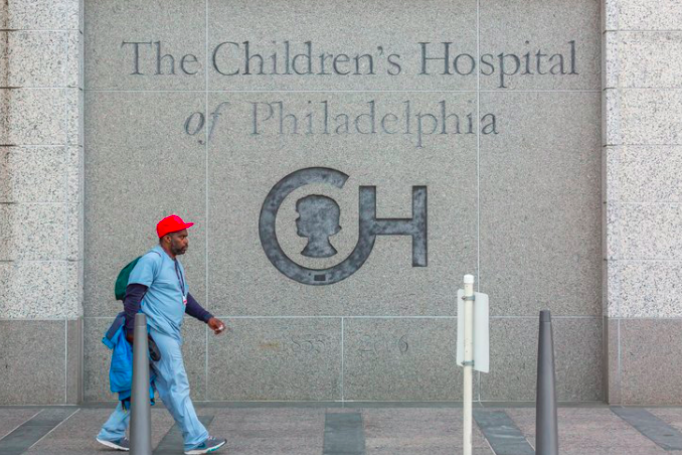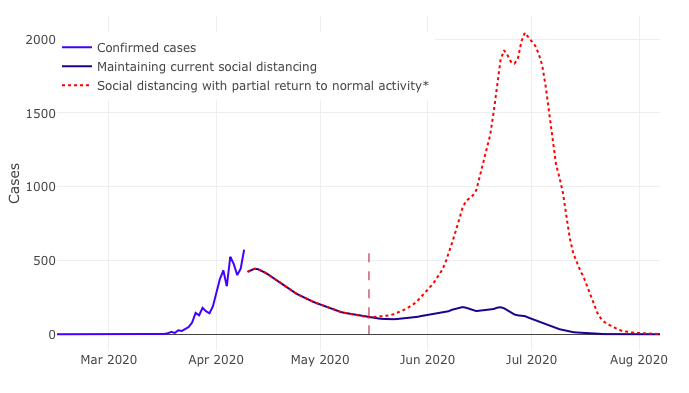
April 24, 2020
 Thom Carroll/for PhillyVoice
Thom Carroll/for PhillyVoice
The COVID-19 model developed by PolicyLab at the Children's Hospital of Philadelphia bases its 120-day projections for coronavirus transmission on social distancing, population density and warm weather, using a partial reopening date of May 15.
A new COVID-19 model developed at the Children's Hospital of Philadelphia is among the first in the United States to focus on county-level projections for coronavirus transmission, including communities across the Delaware Valley.
The model, created by CHOP's PolicyLab in conjunction with the University of Pennsylvania, analyzes the competing influences of social distancing, population density and temperature in the spread of COVID-19.
Real-time data from 260 counties across the United States is used to project the risk of resurgent transmission in the scenario of communities partially reopening in mid-May, with potentially broader openings through the rest of spring and summer. The model represents approximately 58% of the U.S. population.
“Complementary to other national models, our data differ in that they illustrate the situation in our own backyards," said Dr. David Rubin, director of PolicyLab. "With our model, we hope to help city leaders and public health officials build more targeted strategies for reopening communities that consider not only the strain on our health care systems, but also how to deploy other strategies such as masking and workplace safety regulations to maintain some distancing as people leave the confines of their homes.”
Researchers incorporated temperature into their projections based on studies that suggest warmer weather may slow, but not entirely halt, the transmission of SARS-Cov-2. This is partly why the U.S. Centers for Disease Control and Prevention has warned of a stronger second wave of the virus in the winter, coinciding with flu season.
"We were especially interested to find that rising temperatures may have helped reduce the spread of COVID-19, particularly in our less populous counties, but unfortunately the effect of weather, in the absence of strict social distancing policies, has not been strong enough to prevent resurgent transmission in our most crowded cities and their metropolitan areas," said Dr. Gregory Tasian, a Penn Medicine epidemiology professor and faculty member at PolicyLab.
The projections in the CHOP model are based on the instantaneous reproduction number of the infection, which is defined as the average number of secondary cases that one primary case could generate. This is determined locally using the primary factors of population density, existing infections and degree of social distancing.
By using a May 15 reopening date, the model assumes a partial return of normal travel to non-essential businesses, as compared to average change in travel to those businesses within the county over the last month. County-level travel patterns were calculated using cellphone GPS data.
The estimates for Philadelphia show a sharp spike in daily new cases through June if the city follows a partial reopening, with a steep decline in cases beginning in July.
The CHOP model, combined with a new case mapping tool developed by Carnegie Mellon University, offers some of the most granular data and projections on the spread and status of COVID-19. PolicyLab hopes the model can be used by local governments to guide their decisions about reopening.
“This model not only provides real-time county-level data from the last two months to help officials understand the factors that most influence disease transmission in their communities, it also predicts the risk for resurgent transmission, which could be helpful in predicting future outbreaks,” said Dr. Jing Huang, a biostatistician and faculty member at PolicyLab. "While we designed the model specifically for COVID-19, we continue to refine our methods as we seek to validate them for use in other potential pandemics.”
 PolicyLab/Children's Hospital of Philadelphia
PolicyLab/Children's Hospital of Philadelphia